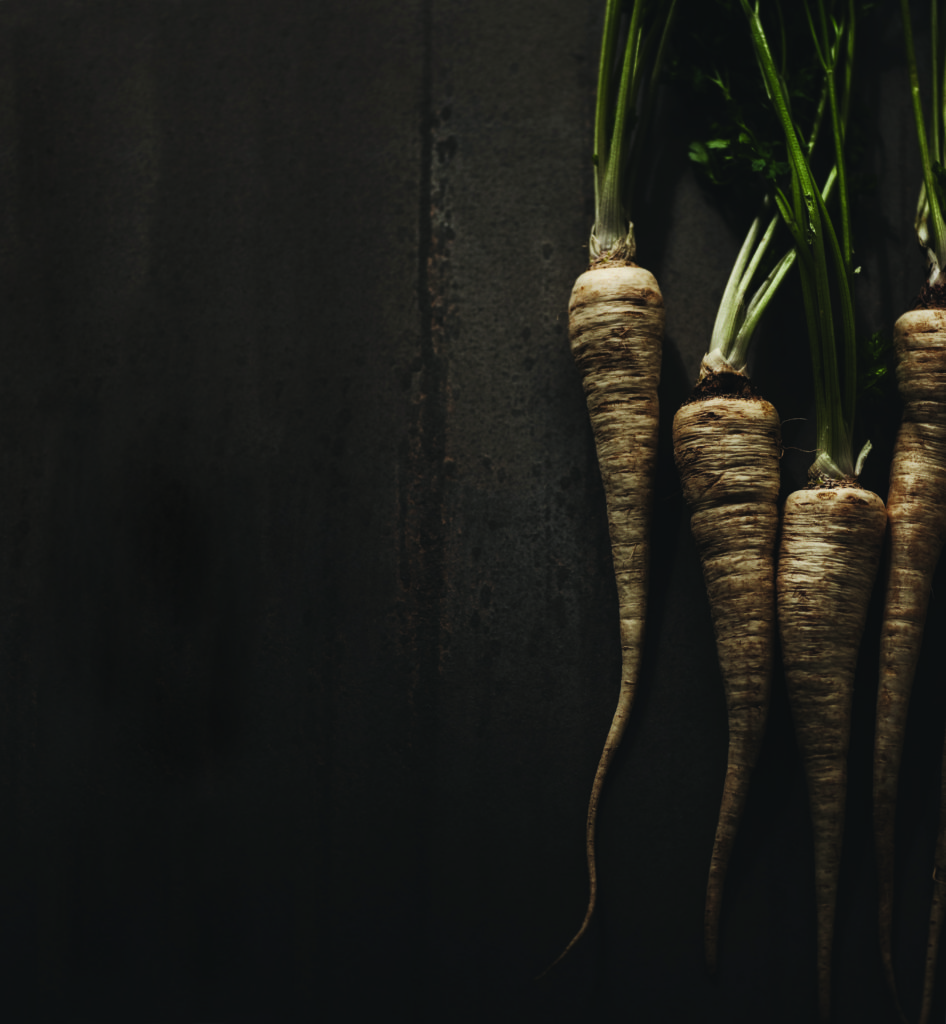
by Tapp Francke
I am always sad to see August in my rearview mirror, with long, hot beach days and carefree, late-night cookouts in the past. Coming up are shorter days, chillier weather and a return to school routines. But with the cool breezes of September come the best vegetables of the year.
The fall bounty promises cauliflower, broccoli, Brussels sprouts, pumpkin, turnips, parsnips, sweet potatoes and beets, all hearty vegetables loaded with nutrients to fortify the body for the long winter. Here are a few favorite fall heroes:
Beets
Rich in B vitamins, iron, manganese, copper and potassium, this crimson beauty has properties that enrich the blood and improve stamina. Studies have shown that eating nitrate-rich beets can improve endurance by up to 16 percent—quite helpful when slogging through the slush.
Additionally, beets contain high levels of betaine and tryptophan, which are known to help alleviate depression. The best aspect of beets, though, is their amazing cleansing abilities. They, along with other red fruits and vegetables, help to keep the lymphatic system moving, cleansing the liver and purifying the blood. Heading into cold and flu season, that can be very reassuring.
Beets are great roasted. Peel them (careful not to wear your favorite white shirt), chop them into 1-inch cubes, toss with avocado oil or a little ghee (clarified butter made from cow’s milk), some Himalayan salt and fresh thyme and roast at 375° for about 40 minutes. You can use roasted beets as a side dish, mix them into a green salad or blend with some bone broth for a hearty soup.
Butternut Squash
Packed with vitamins C, E, and most of the B family, one cup of this dynamo offers more potassium than a banana. Their brilliant orange color comes from the concentration of carotenoids that the body converts into vitamin A, which is essential to the optimal functioning of the immune system. An important note here: Many of the nutrients contained in butternut squash are fat soluble (namely E and A), so they require a small amount of fat, like ghee or cashews, to make sure the nutrients are bioavailable.
Butternut squash is delicious roasted. It also can be made into a nourishing soup with sautéed onions and cashew cream. Add it to red coconut curry for the sweet ness as well as the nutritional punch.
Parsnips
These powerhouse vegetables are largely overlooked. We hear all the time that we need to eat all the colors of the rainbow to get a full spectrum of phytonutrients, but white vegetables often get a bum rap. Like their pale cousins—onion, garlic and cauliflower—they have a lot to offer. Parsnips are high in vitamin C, zinc, folate, potassium and manganese, as well as being very high in fiber. They are also anti-inflammatory and help boost the immune system.
Parsnips can be roasted, blended into soup and added to stews. Or slice them really thin and roast with ghee and Himalayan salt. They taste like sweet shoestring fries!
The crowning glory of the fall vegetables, Brussels sprouts are rich in vitamins C and K, B vitamins like folate and B6, minerals such as manganese and potassium, and carotenoids, which convert into vitamin A in the body. Additionally, these “mini cabbages” are rich in heart- and brain-healthy omega-3 fatty acids.
Like their cruciferous relatives, broccoli, cauliflower and cabbage, Brussels sprouts are high in helpful nutrients called diindolylmethane (DIM) and Indole-3-Carbinol (I3C). These are crucial for phase 2 liver detox. Cruciferous vegetables play an essential role in healthy hormone metabolism by breaking down aggressive estrogens and flushing them out of the system.
The key with Brussels sprouts is to not overcook them. Cook only until tender to maintain their sweet, nutty flavor. I like roasting mine with avocado oil, Himalayan salt and walnuts. This is the dish that my in-laws always request at holiday meals, and for good reason.
STANDwellness.com



